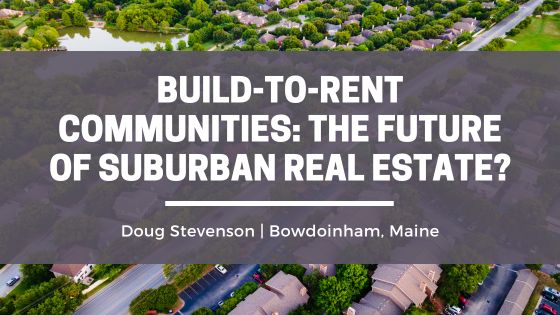What Are Build-to-Rent Communities
Build-to-rent (BTR) communities are purpose-built neighborhoods where all homes are constructed with the specific intent of being rented out, not sold. These single-family rental communities offer a hybrid between traditional apartment living and standalone homeownership. With rising home prices and shifting lifestyle preferences, BTR communities are rapidly gaining traction—especially in suburban markets.
Why They’re Growing in Popularity
Several factors are fueling the rise of build-to-rent housing. First, many would-be homebuyers are priced out of ownership due to high interest rates and limited inventory. Renting a home provides them with space, privacy, and a yard—features not typically found in urban apartments. Second, people are valuing flexibility more than ever. Renting allows them to relocate for work, avoid maintenance headaches, and skip long-term financial commitments. Build-to-rent communities meet this demand with well-designed, professionally managed homes that offer both convenience and comfort.
What This Means for Suburban Development
Traditionally, the suburbs have been associated with homeownership. However, BTR communities are challenging that model by offering renters access to suburban amenities like good schools, larger living spaces, and quiet neighborhoods. Developers are seizing the opportunity by purchasing land on the outskirts of growing cities and building entire neighborhoods of rental homes. These communities often include shared amenities such as pools, fitness centers, playgrounds, and walking trails—blurring the lines between multifamily complexes and single-family living.
Benefits for Investors and Developers
For real estate investors, build-to-rent communities offer an attractive asset class. These properties typically experience lower turnover than apartments and attract long-term tenants such as families or remote workers. From a maintenance standpoint, having a standardized set of homes built at the same time also makes property management more efficient. Additionally, as demand for single-family rentals continues to rise, BTR communities provide investors with a scalable way to meet market needs while generating consistent income.
Potential Challenges and Criticisms
While the build-to-rent model has clear advantages, it also faces scrutiny. Critics argue that institutional investors and developers entering the BTR space are contributing to housing affordability issues by reducing the number of homes available for purchase. There’s also concern that entire rental-only neighborhoods may lack the stability and investment that often comes with homeownership. Local governments may be hesitant to approve large BTR developments unless they include long-term community-building strategies.
The Long-Term Outlook
Despite the criticisms, the build-to-rent trend shows no signs of slowing down. As demographics shift and economic conditions evolve, many Americans are choosing renting as a lifestyle rather than a temporary situation. Build-to-rent communities offer a solution that fits today’s needs: flexibility, space, and amenities without the burden of ownership. For developers, investors, and suburban planners, this represents a major shift—and a compelling opportunity.
Conclusion
Build-to-rent communities are reshaping the suburban real estate landscape. By blending the best of single-family homes with the convenience of renting, these communities are meeting a growing demand among modern renters. Whether you’re an investor seeking stable returns or a family looking for more space without the long-term commitment of buying, BTR developments are emerging as a significant force in the future of suburban living.

